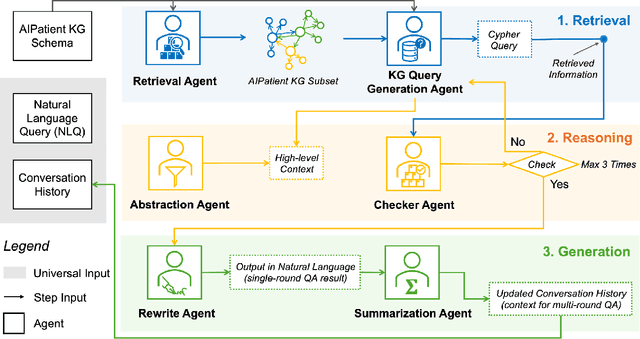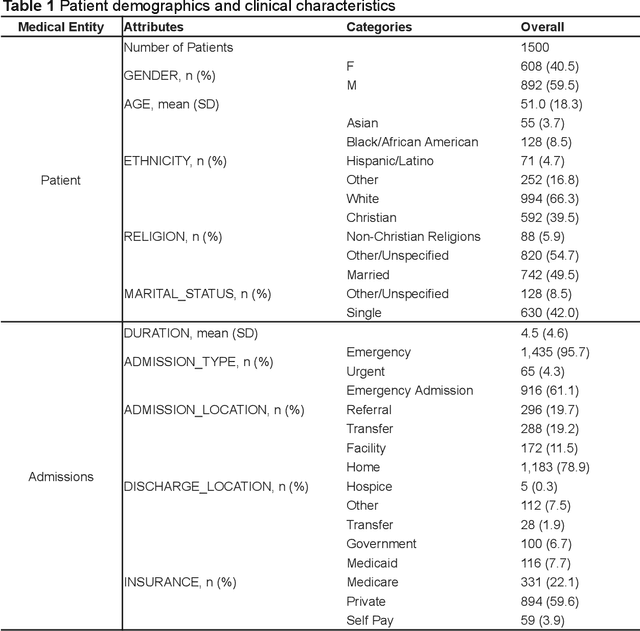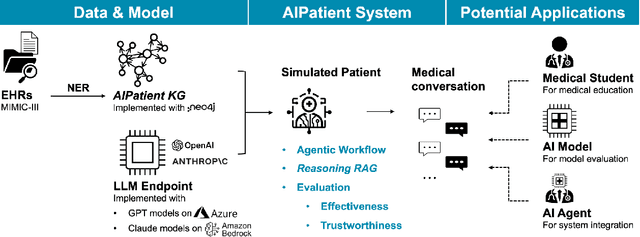Xin Ma
Fish Mouth Inspired Origami Gripper for Robust Multi-Type Underwater Grasping
Mar 14, 2025Abstract:Robotic grasping and manipulation in underwater environments present unique challenges for robotic hands traditionally used on land. These challenges stem from dynamic water conditions, a wide range of object properties from soft to stiff, irregular object shapes, and varying surface frictions. One common approach involves developing finger-based hands with embedded compliance using underactuation and soft actuators. This study introduces an effective alternative solution that does not rely on finger-based hand designs. We present a fish mouth inspired origami gripper that utilizes a single degree of freedom to perform a variety of robust grasping tasks underwater. The innovative structure transforms a simple uniaxial pulling motion into a grasping action based on the Yoshimura crease pattern folding. The origami gripper offers distinct advantages, including scalable and optimizable design, grasping compliance, and robustness, with four grasping types: pinch, power grasp, simultaneous grasping of multiple objects, and scooping from the seabed. In this work, we detail the design, modeling, fabrication, and validation of a specialized underwater gripper capable of handling various marine creatures, including jellyfish, crabs, and abalone. By leveraging an origami and bio-inspired approach, the presented gripper demonstrates promising potential for robotic grasping and manipulation in underwater environments.
Prismatic-Bending Transformable (PBT) Joint for a Modular, Foldable Manipulator with Enhanced Reachability and Dexterity
Mar 07, 2025Abstract:Robotic manipulators, traditionally designed with classical joint-link articulated structures, excel in industrial applications but face challenges in human-centered and general-purpose tasks requiring greater dexterity and adaptability. Addressing these limitations, we introduce the Prismatic-Bending Transformable (PBT) Joint, a novel design inspired by the scissors mechanism, enabling transformable kinematic chains. Each PBT joint module provides three degrees of freedom-bending, rotation, and elongation/contraction-allowing scalable and reconfigurable assemblies to form diverse kinematic configurations tailored to specific tasks. This innovative design surpasses conventional systems, delivering superior flexibility and performance across various applications. We present the design, modeling, and experimental validation of the PBT joint, demonstrating its integration into modular and foldable robotic arms. The PBT joint functions as a single SKU, enabling manipulators to be constructed entirely from standardized PBT joints without additional customized components. It also serves as a modular extension for existing systems, such as wrist modules, streamlining design, deployment, transportation, and maintenance. Three sizes-large, medium, and small-have been developed and integrated into robotic manipulators, highlighting their enhanced dexterity, reachability, and adaptability for manipulation tasks. This work represents a significant advancement in robotic design, offering scalable and efficient solutions for dynamic and unstructured environments.
Few-shot Sim2Real Based on High Fidelity Rendering with Force Feedback Teleoperation
Mar 03, 2025Abstract:Teleoperation offers a promising approach to robotic data collection and human-robot interaction. However, existing teleoperation methods for data collection are still limited by efficiency constraints in time and space, and the pipeline for simulation-based data collection remains unclear. The problem is how to enhance task performance while minimizing reliance on real-world data. To address this challenge, we propose a teleoperation pipeline for collecting robotic manipulation data in simulation and training a few-shot sim-to-real visual-motor policy. Force feedback devices are integrated into the teleoperation system to provide precise end-effector gripping force feedback. Experiments across various manipulation tasks demonstrate that force feedback significantly improves both success rates and execution efficiency, particularly in simulation. Furthermore, experiments with different levels of visual rendering quality reveal that enhanced visual realism in simulation substantially boosts task performance while reducing the need for real-world data.
A Predefined-Time Convergent and Noise-Tolerant Zeroing Neural Network Model for Time Variant Quadratic Programming With Application to Robot Motion Planning
Dec 29, 2024Abstract:This paper develops a predefined-time convergent and noise-tolerant fractional-order zeroing neural network (PTC-NT-FOZNN) model, innovatively engineered to tackle time-variant quadratic programming (TVQP) challenges. The PTC-NT-FOZNN, stemming from a novel iteration within the variable-gain ZNN spectrum, known as FOZNNs, features diminishing gains over time and marries noise resistance with predefined-time convergence, making it ideal for energy-efficient robotic motion planning tasks. The PTC-NT-FOZNN enhances traditional ZNN models by incorporating a newly developed activation function that promotes optimal convergence irrespective of the model's order. When evaluated against six established ZNNs, the PTC-NT-FOZNN, with parameters $0 < \alpha \leq 1$, demonstrates enhanced positional precision and resilience to additive noises, making it exceptionally suitable for TVQP tasks. Thorough practical assessments, including simulations and experiments using a Flexiv Rizon robotic arm, confirm the PTC-NT-FOZNN's capabilities in achieving precise tracking and high computational efficiency, thereby proving its effectiveness for robust kinematic control applications.
COMO: Cross-Mamba Interaction and Offset-Guided Fusion for Multimodal Object Detection
Dec 24, 2024Abstract:Single-modal object detection tasks often experience performance degradation when encountering diverse scenarios. In contrast, multimodal object detection tasks can offer more comprehensive information about object features by integrating data from various modalities. Current multimodal object detection methods generally use various fusion techniques, including conventional neural networks and transformer-based models, to implement feature fusion strategies and achieve complementary information. However, since multimodal images are captured by different sensors, there are often misalignments between them, making direct matching challenging. This misalignment hinders the ability to establish strong correlations for the same object across different modalities. In this paper, we propose a novel approach called the CrOss-Mamba interaction and Offset-guided fusion (COMO) framework for multimodal object detection tasks. The COMO framework employs the cross-mamba technique to formulate feature interaction equations, enabling multimodal serialized state computation. This results in interactive fusion outputs while reducing computational overhead and improving efficiency. Additionally, COMO leverages high-level features, which are less affected by misalignment, to facilitate interaction and transfer complementary information between modalities, addressing the positional offset challenges caused by variations in camera angles and capture times. Furthermore, COMO incorporates a global and local scanning mechanism in the cross-mamba module to capture features with local correlation, particularly in remote sensing images. To preserve low-level features, the offset-guided fusion mechanism ensures effective multiscale feature utilization, allowing the construction of a multiscale fusion data cube that enhances detection performance.
A CT-guided Control Framework of a Robotic Flexible Endoscope for the Diagnosis of the Maxillary Sinusitis
Oct 27, 2024Abstract:Flexible endoscopes are commonly adopted in narrow and confined anatomical cavities due to their higher reachability and dexterity. However, prolonged and unintuitive manipulation of these endoscopes leads to an increased workload on surgeons and risks of collision. To address these challenges, this paper proposes a CT-guided control framework for the diagnosis of maxillary sinusitis by using a robotic flexible endoscope. In the CT-guided control framework, a feasible path to the target position in the maxillary sinus cavity for the robotic flexible endoscope is designed. Besides, an optimal control scheme is proposed to autonomously control the robotic flexible endoscope to follow the feasible path. This greatly improves the efficiency and reduces the workload for surgeons. Several experiments were conducted based on a widely utilized sinus phantom, and the results showed that the robotic flexible endoscope can accurately and autonomously follow the feasible path and reach the target position in the maxillary sinus cavity. The results also verified the feasibility of the CT-guided control framework, which contributes an effective approach to early diagnosis of sinusitis in the future.
Mesa-Extrapolation: A Weave Position Encoding Method for Enhanced Extrapolation in LLMs
Oct 21, 2024



Abstract:Large language models (LLMs), although having revolutionized many fields, still suffer from the challenging extrapolation problem, where the inference ability of LLMs sharply declines beyond their max training lengths. In this work, we conduct a theoretical analysis to better understand why No Position Encoding (NoPE) fails outside its effective range, as well as examining the power of Position Encoding (PE) in this context. Our findings reveal that with meticulous weave position, PE can indeed be extended beyond effective range. Our theorems establish that LLMs equipped with weave PE can achieve improved extrapolation performance without additional cost. Furthermore, we introduce a novel weave PE method, Mesa-Extrapolation, which utilizes a chunk-based triangular attention matrix and applies Stair PE to manage the final chunk. This method not only retains competitive performance but also offers substantial benefits such as significantly reduced memory demand and faster inference speed. Extensive experiments validate the effectiveness of Mesa-Extrapolation, demonstrating its potential as a scalable solution to enhancing LLMs applicative reach.
AutoFPDesigner: Automated Flight Procedure Design Based on Multi-Agent Large Language Model
Oct 19, 2024Abstract:Current flight procedure design methods heavily rely on human-led design process, which is not only low auto-mation but also suffer from complex algorithm modelling and poor generalization. To address these challenges, this paper proposes an agent-driven flight procedure design method based on large language model, named Au-toFPDesigner, which utilizes multi-agent collaboration to complete procedure design. The method enables end-to-end automated design of performance-based navigation (PBN) procedures. In this process, the user input the design requirements in natural language, AutoFPDesigner models the flight procedure design by loading the design speci-fications and utilizing tool libraries complete the design. AutoFPDesigner allows users to oversee and seamlessly participate in the design process. Experimental results show that AutoFPDesigner ensures nearly 100% safety in the designed flight procedures and achieves 75% task completion rate, with good adaptability across different design tasks. AutoFPDesigner introduces a new paradigm for flight procedure design and represents a key step towards the automation of this process. Keywords: Flight Procedure Design; Large Language Model; Performance-Based Navigation (PBN); Multi Agent;
AIPatient: Simulating Patients with EHRs and LLM Powered Agentic Workflow
Sep 27, 2024



Abstract:Simulated patient systems play a crucial role in modern medical education and research, providing safe, integrative learning environments and enabling clinical decision-making simulations. Large Language Models (LLM) could advance simulated patient systems by replicating medical conditions and patient-doctor interactions with high fidelity and low cost. However, ensuring the effectiveness and trustworthiness of these systems remains a challenge, as they require a large, diverse, and precise patient knowledgebase, along with a robust and stable knowledge diffusion to users. Here, we developed AIPatient, an advanced simulated patient system with AIPatient Knowledge Graph (AIPatient KG) as the input and the Reasoning Retrieval-Augmented Generation (Reasoning RAG) agentic workflow as the generation backbone. AIPatient KG samples data from Electronic Health Records (EHRs) in the Medical Information Mart for Intensive Care (MIMIC)-III database, producing a clinically diverse and relevant cohort of 1,495 patients with high knowledgebase validity (F1 0.89). Reasoning RAG leverages six LLM powered agents spanning tasks including retrieval, KG query generation, abstraction, checker, rewrite, and summarization. This agentic framework reaches an overall accuracy of 94.15% in EHR-based medical Question Answering (QA), outperforming benchmarks that use either no agent or only partial agent integration. Our system also presents high readability (median Flesch Reading Ease 77.23; median Flesch Kincaid Grade 5.6), robustness (ANOVA F-value 0.6126, p<0.1), and stability (ANOVA F-value 0.782, p<0.1). The promising performance of the AIPatient system highlights its potential to support a wide range of applications, including medical education, model evaluation, and system integration.
A multi-source data power load forecasting method using attention mechanism-based parallel cnn-gru
Sep 26, 2024



Abstract:Accurate power load forecasting is crucial for improving energy efficiency and ensuring power supply quality. Considering the power load forecasting problem involves not only dynamic factors like historical load variations but also static factors such as climate conditions that remain constant over specific periods. From the model-agnostic perspective, this paper proposes a parallel structure network to extract important information from both dynamic and static data. Firstly, based on complexity learning theory, it is demonstrated that models integrated through parallel structures exhibit superior generalization abilities compared to individual base learners. Additionally, the higher the independence between base learners, the stronger the generalization ability of the parallel structure model. This suggests that the structure of machine learning models inherently contains significant information. Building on this theoretical foundation, a parallel convolutional neural network (CNN)-gate recurrent unit (GRU) attention model (PCGA) is employed to address the power load forecasting issue, aiming to effectively integrate the influences of dynamic and static features. The CNN module is responsible for capturing spatial characteristics from static data, while the GRU module captures long-term dependencies in dynamic time series data. The attention layer is designed to focus on key information from the spatial-temporal features extracted by the parallel CNN-GRU. To substantiate the advantages of the parallel structure model in extracting and integrating multi-source information, a series of experiments are conducted.
 Add to Chrome
Add to Chrome Add to Firefox
Add to Firefox Add to Edge
Add to Edge